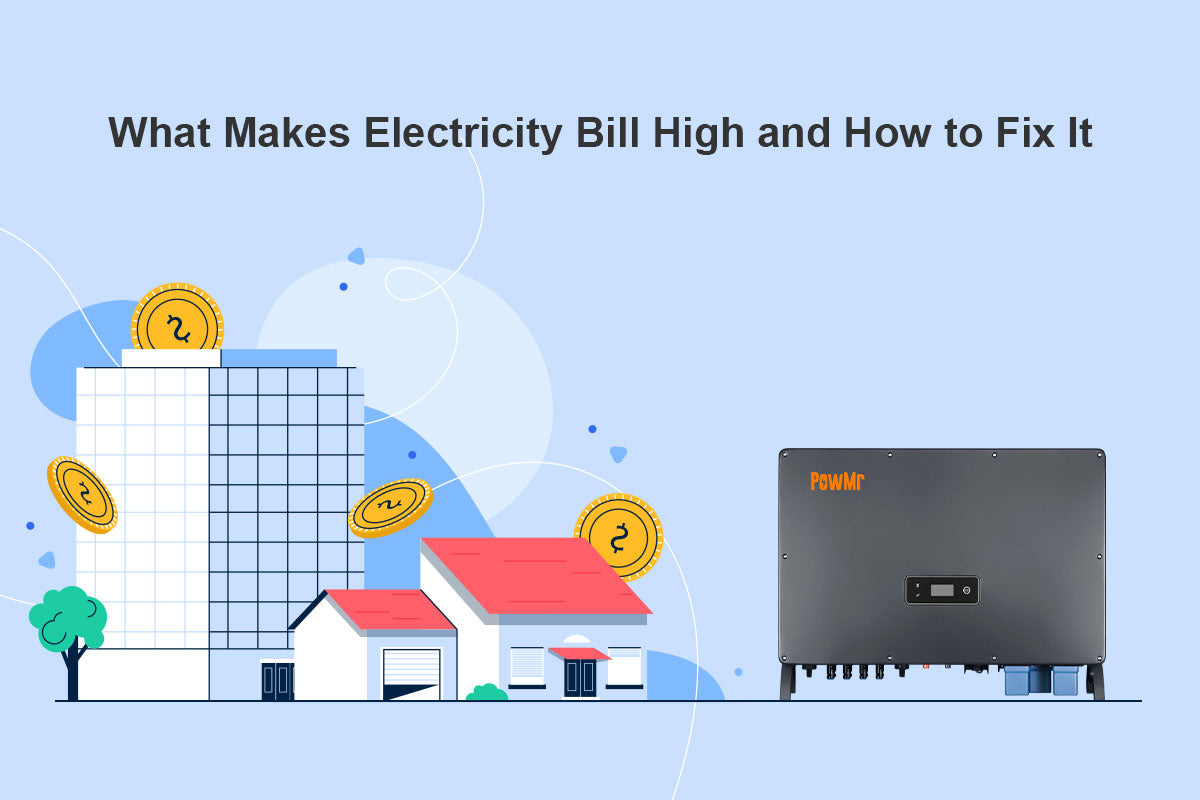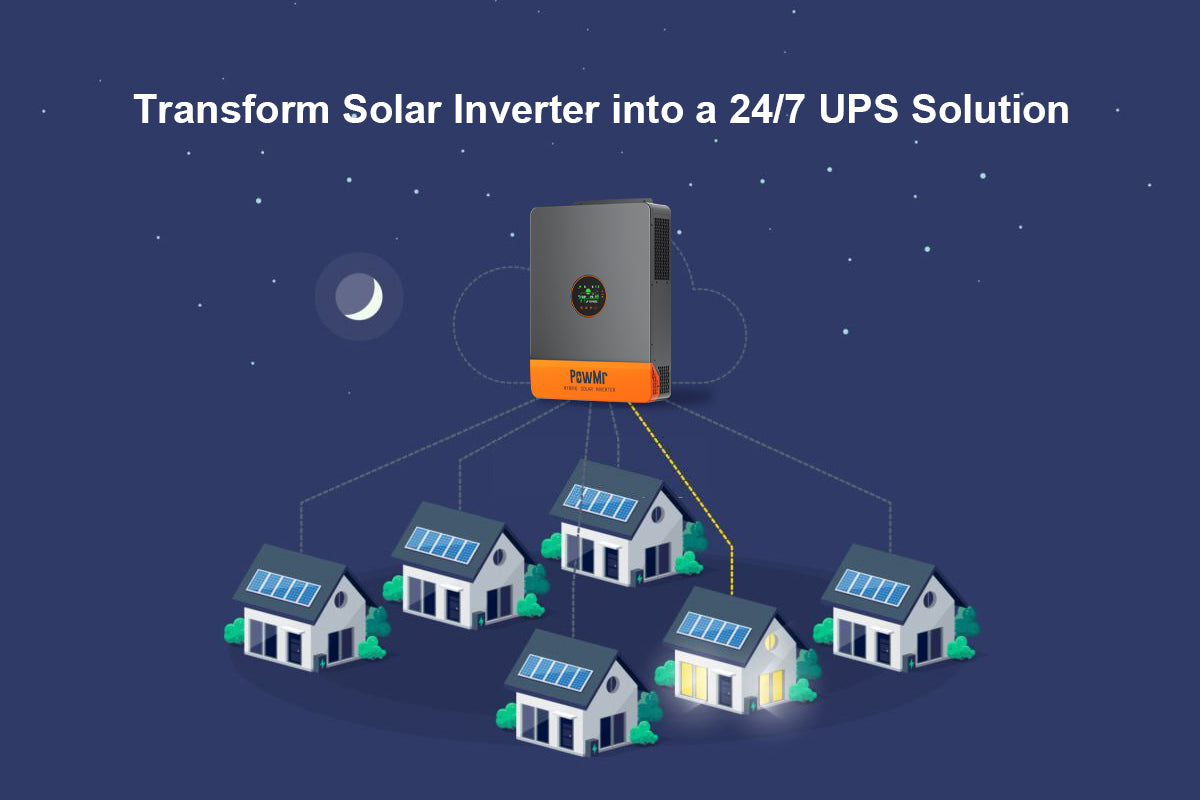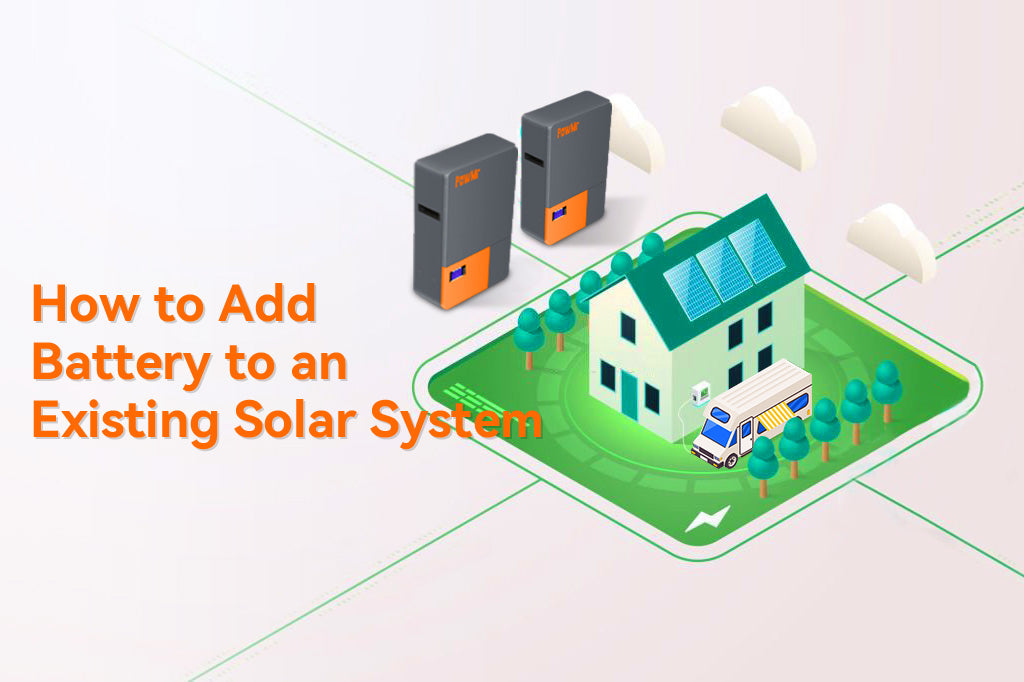ประหลาดใจกับ การเพิ่มขึ้นอย่างกะทันหัน ในบิลค่าไฟฟ้าของคุณ? ความตกใจเมื่อเปิดดูใบแจ้งยอดรายเดือนอาจทำให้รู้สึกท่วมท้น โดยเฉพาะอย่างยิ่งหากคุณไม่แน่ใจเกี่ยวกับสาเหตุที่ทำให้ค่าใช้จ่ายเพิ่มขึ้น ในคู่มือนี้ เราจะเจาะลึกถึง สาเหตุที่ทำให้บิลค่าไฟฟ้าสูงเกินคาด และให้ แนวทางปฏิบัติที่ช่วยให้คุณลด การใช้พลังงานของคุณ นอกจากนี้เรายังจะสำรวจวิธีการที่สร้างสรรค์ในการจัดการการใช้พลังงานของคุณอย่างชาญฉลาดโดยการนำเทคโนโลยีพลังงานแสงอาทิตย์เข้ามาใช้.
อะไรทำให้ค่าไฟฟ้าของคุณเพิ่มขึ้น?
สาเหตุของค่าไฟฟ้าที่สูงอาจเกิดจากปัจจัยภายในหรือภายนอก ในเบื้องต้น ควรพิจารณาการเปลี่ยนแปลงใน พฤติกรรมการใช้ไฟฟ้า รวมถึงการตรวจสอบความผิดปกติใน ระบบไฟฟ้าและอุปกรณ์ ต่อมา สามารถพิจารณา ปัจจัยภายนอก ได้
ปัจจัยของเครื่องใช้ไฟฟ้าและอุปกรณ์
การใช้เครื่องใช้ไฟฟ้าและอุปกรณ์มีผลต่อการใช้พลังงานอย่างมาก ควรใส่ใจในเรื่องเครื่องใช้ไฟฟ้า ข้อบกพร่อง ประสิทธิภาพ และพลังงานหลอกเพื่อลดการใช้พลังงานให้มีประสิทธิภาพสูงสุด.
การใช้เครื่องใช้ไฟฟ้า: การแนะนำหรือเพิ่มการใช้เครื่องใช้ไฟฟ้าที่ใช้พลังงานสูง เช่น เครื่องปรับอากาศ สามารถทำให้การใช้พลังงานเพิ่มขึ้นได้.
อุปกรณ์ที่มีปัญหา: อุปกรณ์ที่ทำงานผิดปกติอาจใช้พลังงานมากกว่าปกติ; การบำรุงรักษาเป็นประจำเป็นสิ่งสำคัญ.
อุปกรณ์เก่าหรือไม่มีประสิทธิภาพ: ระบบ HVAC หรือเครื่องใช้ที่มีอายุมากอาจมีประสิทธิภาพในการใช้พลังงานลดลง ส่งผลให้ค่าใช้จ่ายสูงขึ้น.
การใช้พลังงานฟาโทม: พลังงานที่ใช้ในโหมดสแตนด์บายจากอุปกรณ์ที่เสียบปลั๊กทิ้งไว้สามารถสะสมได้ ซึ่งส่งผลกระทบต่อค่าใช้จ่าย.
การรั่วไหลของระบบไฟฟ้า: ความผิดปกติหรือการรั่วไหลในสายไฟอาจทำให้มีการใช้พลังงานอย่างต่อเนื่องแม้ว่าอุปกรณ์จะปิดอยู่ก็ตาม.
ปัจจัยภายนอกและสิ่งแวดล้อม
หากไม่มีการเปลี่ยนแปลงในระบบการใช้พลังงานของคุณหรือการเปลี่ยนแปลงในนิสัยการใช้พลังงานของคุณ ให้มองหาปัจจัยภายนอก เช่น:
การเปลี่ยนแปลงตามฤดูกาลและสภาพอากาศที่ผิดปกติ
การใช้พลังงานมีการเปลี่ยนแปลงตามฤดูกาลเนื่องจากสภาพอากาศ อุณหภูมิที่รุนแรง ไม่ว่าจะร้อนหรือเย็น จะกระตุ้นให้มีการใช้พลังงานมากขึ้นและทำให้ระบบทำความร้อนหรือทำความเย็นมีความตึงเครียด ส่งผลให้การใช้พลังงานเพิ่มขึ้น.
อัตราการเปลี่ยนแปลง
"บิลค่าไฟฟ้าของคุณอาจเพิ่มขึ้นอย่างไม่คาดคิดเนื่องจากการเพิ่มขึ้นล่าสุดในอัตราค่าบริการโดยผู้ให้บริการไฟฟ้าของคุณ การเปลี่ยนแปลงอย่างกะทันหันในนโยบายการตั้งราคา หรือการปรับโครงสร้างอัตราค่าบริการสามารถส่งผลให้บิลสูงขึ้นได้ สิ่งสำคัญคือต้องตรวจสอบใบแจ้งหนี้ของคุณเพื่อดูการแจ้งเตือนอย่างเป็นทางการเกี่ยวกับการขึ้นราคา."
การเปลี่ยนแปลงแผนอัตรา
ปัจจัยหนึ่งที่อาจเป็นไปได้คือแผนไฟฟ้าของคุณได้สิ้นสุดลง และคุณถูกเปลี่ยนไปยังอัตราที่แพงกว่าทันที ซึ่งมักเกิดขึ้นเมื่อแผนเริ่มต้นหรือ แผนอัตราคงที่ หมดอายุ ทำให้เกิดการเปลี่ยนไปยัง อัตรานอกสัญญา.
ประเด็นเกี่ยวกับมิเตอร์
ตรวจสอบให้แน่ใจว่าการเรียกเก็บเงินถูกต้องโดยการจัดการกับมิเตอร์ที่ทำงานผิดปกติอย่างรวดเร็ว เนื่องจากอาจให้การอ่านค่าที่ไม่ถูกต้อง ซึ่งนำไปสู่ความไม่ตรงกันในการเรียกเก็บเงินและความท้าทายทางการเงิน.
หากมีการเพิ่มขึ้นที่ไม่คาดคิดเกิดขึ้นอย่างต่อเนื่อง ให้ติดต่อบริษัทสาธารณูปโภคของคุณเพื่อขอคำชี้แจงและพิจารณาการตรวจสอบพลังงานเพื่อตรวจหาพื้นที่ที่สามารถปรับปรุงได้.
วิธีลดค่าไฟฟ้าของคุณ
การลดค่าไฟฟ้าของคุณต้องใช้วิธีการที่ครอบคลุมซึ่งเกี่ยวข้องกับการเข้าใจและจัดการกับปัจจัยต่างๆ ที่มีผลต่อการใช้พลังงาน นี่คือข้อเสนอแนะที่เป็นประโยชน์ตามสาเหตุที่กล่าวถึงข้างต้น:
อัปเกรดเป็นเครื่องใช้ไฟฟ้าที่ประหยัดพลังงานและบำรุงรักษาอย่างสม่ำเสมอ
พิจารณาเปลี่ยนเครื่องใช้ไฟฟ้าเก่าเป็นรุ่นที่ประหยัดพลังงาน กำหนดการบำรุงรักษาเครื่องใช้ไฟฟ้าของคุณเป็นประจำเพื่อให้แน่ใจว่ามันทำงานได้อย่างมีประสิทธิภาพและไม่ใช้พลังงานเกินความจำเป็นเนื่องจากข้อบกพร่อง.
ถอดปลั๊กอุปกรณ์
ถอดปลั๊กอุปกรณ์และที่ชาร์จเมื่อไม่ใช้งานเพื่อลดการใช้พลังงานในโหมดสแตนด์บาย ใช้ปลั๊กพ่วงเพื่อปิดอุปกรณ์หลายตัวพร้อมกันได้อย่างง่ายดาย.
เทอร์โมสตัทที่ตั้งโปรแกรมได้
ใช้เทอร์โมสแตทที่ตั้งโปรแกรมได้เพื่อปรับอุณหภูมิอัตโนมัติในช่วงเวลาต่าง ๆ ของวัน เพื่อเพิ่มประสิทธิภาพการใช้พลังงานตามพฤติกรรมของคุณ.
ตรวจสอบแผนของคุณเป็นประจำ
ติดตามแผนไฟฟ้าของคุณและระวังการเปลี่ยนแปลงในอัตราหรือเงื่อนไขต่างๆ พิจารณาหาแผนที่ดีกว่าหากจำเป็น.
จัดการปัญหาเมตรอย่างรวดเร็ว
รายงานและจัดการกับมิเตอร์ที่ทำงานผิดปกติอย่างรวดเร็วเพื่อให้แน่ใจว่าการเรียกเก็บเงินถูกต้อง ตรวจสอบการอ่านมิเตอร์ของคุณเป็นประจำเพื่อตรวจจับความผิดปกติในระยะเริ่มต้น.
ดำเนินการกลยุทธ์การจัดการพลังงานอัจฉริยะ
ขยายการจัดการพลังงานอัจฉริยะไปยังธุรกิจและอุตสาหกรรม รวมเข้ากับกริดอัจฉริยะ และดำเนินการกลยุทธ์การเพิ่มประสิทธิภาพการใช้พลังงานเพื่อลดการใช้พลังงานโดยรวม วิธีการที่ครอบคลุมนี้ช่วยเพิ่มการประหยัดค่าใช้จ่าย ลดผลกระทบต่อสิ่งแวดล้อม และมีส่วนช่วยสร้างภูมิทัศน์พลังงานที่ชาญฉลาดและยั่งยืนมากขึ้นสำหรับทุกภาคส่วน.
พิจารณาพลังงานทดแทน
Energysage ระบุ ว่าผู้เป็นเจ้าของบ้านสามารถประหยัดเงินได้เฉลี่ยระหว่าง $20,000 ถึง $96,000 ตลอดอายุการใช้งานของระบบแผงโซลาร์เซลล์ โดยมีการประหยัดที่มากขึ้นสำหรับผู้ใช้เชิงพาณิชย์ พิจารณาการรวมแผงโซลาร์เซลล์และโซลูชันการจัดเก็บพลังงานเข้ากับกลยุทธ์พลังงานของคุณ แผงโซลาร์เซลล์ใช้พลังงานหมุนเวียน และระบบจัดเก็บจะเก็บพลังงานส่วนเกินไว้ใช้ในภายหลัง ลดการพึ่งพาเครือข่ายไฟฟ้า วิธีการแบบคู่ขนี้ไม่เพียงแต่ช่วยลดค่าใช้จ่าย แต่ยังส่งเสริมความยั่งยืนและความเป็นอิสระด้านพลังงานด้วย.
ใช้การจัดการพลังงานที่ชาญฉลาดโดยการรวมพลังงานแสงอาทิตย์
การรวมกันของพลังงานแสงอาทิตย์และการจัดการระบบไฟฟ้าอัจฉริยะก้าวไปอีกขั้นในการลดค่าไฟฟ้าของคุณ เช่น PowMr ซีรีส์ SOLXPOW Smart Solar Grid-Tie Inverter ที่นิยามใหม่การจัดการพลังงานโดยการปรับการใช้พลังงานให้เหมาะสมกับไลฟ์สไตล์และสภาพท้องถิ่นของคุณ.
ด้วยการ ตรวจสอบ โหลดตลอด 24 ชั่วโมง การจัดการอุปกรณ์และระบบ การกำหนดค่าและการอัปเกรดจากระยะไกล มันส่งการแจ้งเตือนและข้อมูลเชิงลึกโดยละเอียดผ่านการเข้าถึงคลาวด์ทั้งบน PC และอุปกรณ์เคลื่อนที่ โดยให้ข้อมูลเรียลไทม์เกี่ยวกับพารามิเตอร์ที่สำคัญ เช่น พลังงาน PV พลังงานโหลด พลังงานกริด พลังงานแบตเตอรี่ และสถานะการชาร์จ (SOC) อินเวอร์เตอร์นี้ช่วยให้คุณมีความรู้ที่ครอบคลุมเกี่ยวกับระบบพลังงานของคุณ ทำให้สามารถปรับเปลี่ยนได้อย่างแม่นยำเพื่อประสิทธิภาพสูงสุด.
การตรวจสอบและควบคุมระบบพลังงาน - คู่มือวิดีโอ
ตอนนี้ มาสำรวจสองโหมดการทำงานของ SOLXPOW เพื่อแสดงให้เห็นว่ามันช่วยลดค่าไฟฟ้าของคุณได้อย่างมีประสิทธิภาพอย่างไร
โหมดการเปลี่ยนภาระสูงสุด
โดย การตั้งค่ากำลังสูงสุด (Pmax) ที่ทำสัญญากับกริด ฟังก์ชันนี้จะช่วยเพิ่มประสิทธิภาพการใช้พลังงานในลักษณะต่อไปนี้:
1. เมื่อการบริโภคต่ำกว่า Pmax, อินเวอร์เตอร์จะให้ความสำคัญกับการชาร์จแบตเตอรี่โดยใช้พลังงานแสงอาทิตย์ โดยที่กริดจะเสริมพลังงานเมื่อจำเป็น เมื่อแบตเตอรี่เต็มแล้ว พลังงานแสงอาทิตย์ส่วนเกินจะถูกนำมาใช้ร่วมกับกริด.
2. หากการใช้โหลดเกิน Pmax, อินเวอร์เตอร์จะดึงพลังงานจากทั้งแบตเตอรี่และแผงโซลาร์เซลล์ เพื่อชดเชยความต้องการพลังงานส่วนเกิน การตอบสนองแบบพลศาสตร์นี้ช่วยให้การใช้พลังงานมีประสิทธิภาพมากขึ้น.
โหมดการเปลี่ยนภาระสูงสุดมีข้อดีในสถานการณ์ต่อไปนี้:
- เมื่อจัดการกับ ค่าธรรมเนียมความจุ ซึ่งเป็นค่าธรรมเนียมที่เรียกเก็บจากอุตสาหกรรมและผู้บริโภคเชิงพาณิชย์ตามปริมาณไฟฟ้าสูงสุดที่พวกเขาสามารถดึงได้ในเวลาใดเวลาหนึ่ง ฟีเจอร์นี้ช่วยให้ผู้ใช้ อยู่ภายในขีดจำกัดความจุที่สัญญาไว้ ป้องกันการใช้เกินที่มีค่าใช้จ่ายสูง.
- ผู้ใช้ที่อยู่อาศัย โดยเฉพาะผู้ที่อยู่ภายใต้ โครงสร้างอัตราที่แตกต่างกัน ซึ่งมีระดับราคาที่แตกต่างกันสำหรับการใช้ไฟฟ้าในระดับต่างๆ เมื่อการใช้ไฟฟ้าเพิ่มขึ้น ต้นทุนต่อหน่วยของไฟฟ้าก็จะเพิ่มขึ้นเช่นกัน.
ความสามารถของอินเวอร์เตอร์ในการดึงพลังงานจากทั้งแบตเตอรี่และแผงโซลาร์เซลล์ในช่วงเวลาที่มีการใช้โหลดเกิน ทำให้การใช้พลังงานมีประสิทธิภาพ ช่วยให้ผู้ใช้สามารถอยู่ในระดับค่าบริการที่ต่ำกว่าและหลีกเลี่ยงค่าใช้จ่ายต่อหน่วยที่สูงขึ้นได้.
โหมดเศรษฐกิจ
PowMr Smart Solar Hybrid Inverter มี โหมดประหยัดพลังงาน ซึ่งเรียกว่า โหมดการตัดยอดพลังงาน โหมดนี้ช่วยให้สามารถตั้งค่าพลังงานการชาร์จ/การปล่อยและเวลาได้ตามต้องการผ่านแอปที่ใช้งานง่าย.
ในโหมดนี้:
- การควบคุมการชาร์จ/การปล่อย:ผู้ใช้สามารถตั้งเวลาเฉพาะสำหรับการชาร์จแบตเตอรี่ โดยใช้พลังงานจากแสงอาทิตย์หรือไฟฟ้าจากกริดตามความชอบ
- การเพิ่มประสิทธิภาพการโหลด: อินเวอร์เตอร์ใช้พลังงานจากแผงโซลาร์เซลล์ แบตเตอรี่ และกริดอย่างชาญฉลาดในช่วงเวลาที่กำหนดไว้ล่วงหน้า เพื่อให้การกระจายพลังงานมีประสิทธิภาพสูงสุด.
โหมดเศรษฐกิจมีความเกี่ยวข้องโดยเฉพาะในสถานการณ์ที่เกี่ยวข้องกับ "อัตราค่าไฟฟ้าตามเวลาใช้งาน" ในพื้นที่ที่ค่าไฟฟ้าจะแตกต่างกันตามเวลาของวัน โหมดนี้ให้ทางออกที่มีประสิทธิภาพสำหรับผู้ใช้ในการจัดการและลดค่าไฟฟ้าของตน โดยการกำหนดเวลาชาร์จและปล่อยไฟฟ้าอย่างมีกลยุทธ์ ผู้ใช้สามารถใช้ประโยชน์จากช่วงเวลาที่ไม่ใช้งาน ลดค่าไฟฟ้าทั้งหมดได้.
บทสรุป
สรุปได้ว่า การจัดการค่าไฟฟ้าที่สูงเกินคาดอย่างมีประสิทธิภาพนั้นต้องการความเข้าใจและการควบคุมการใช้พลังงานอย่างละเอียด คู่มือนี้ได้สำรวจสาเหตุที่เป็นไปได้สำหรับการเพิ่มขึ้นของค่าใช้จ่ายและเสนอแนวทางแก้ไข
เพื่อผลลัพธ์ที่ดีที่สุด, การติดตามและควบคุมการใช้พลังงานอย่างมีประสิทธิภาพเป็นสิ่งจำเป็น. การนำเทคนิคการจัดการพลังงานที่ชาญฉลาดมาใช้และการสำรวจแหล่งพลังงานหมุนเวียน เช่น พลังงานแสงอาทิตย์ ไม่เพียงแต่ช่วยลดค่าใช้จ่าย แต่ยังส่งเสริมกรอบพลังงานที่ชาญฉลาดและยั่งยืนมากขึ้น.



